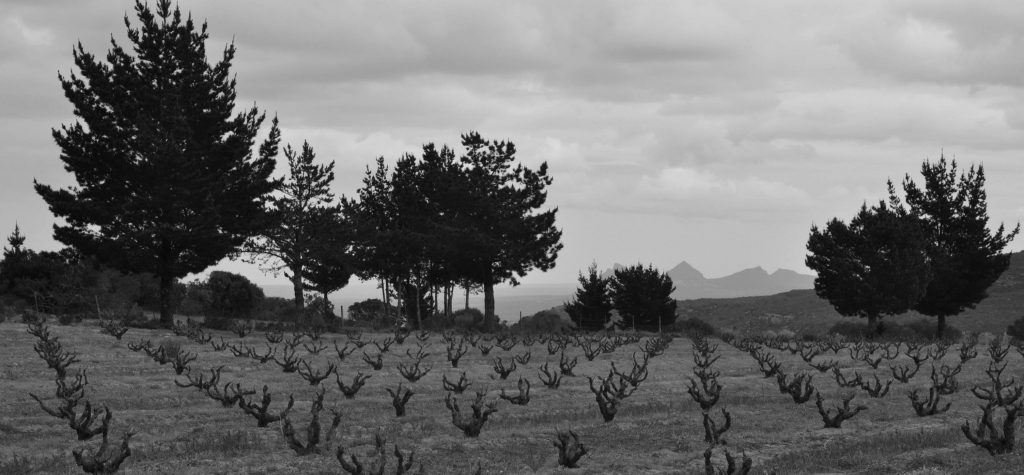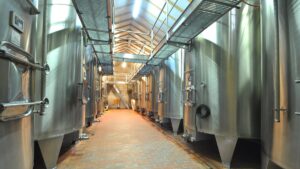
Two decades of immense dedication have resulted in Eben Sadie’s success as an eminent figure in South Africa’s Swartland region. Passionate about the power of terroir, he knows the importance of the vineyard, promoting South African produce all whilst seeking new ways to incorporate different grapes.
Eben Sadie started out in the wine world of his native South Africa, but his curiosity led him to vineyards quite a way from home. Wanting to see the viticulture of the ‘old world’ for himself, Sadie travelled to Germany, Austria, Italy, Spain, Burgundy, and even the US to visit growers and work alongside them. With such a wealth of experience under his belt, Sadie built up a good idea of what, in his view, was ‘missing’ from cultivation and wine craft in South Africa.
In 1998, then, he joined the Spice Route estate, which had been recently founded in Swartland by Charles Back. He became the domain’s cellar master, and began to make his own wine, too, from parcels he was cultivating himself. The year 2000 brought the first Columella vintage, a blend of Syrah and Mourvèdre in just 5,000 bottles. This was a revelation. Two years later the Palladius cuvée made its grand début, this time a blend of Chenin Blanc, Viognier, Chardonnay, and Grenache Blanc.
Terroir comes first
In a country where the wine maker is generally considered most important for the wine, Eben Sadie stands out as a so-called ‘terroirist’. This is an approach that sees the vintner as someone who accompanies the grapes in their purest expression of the terroir, rather than someone who ‘makes’ wine. It’s a subtle difference but an important one. Choosing the Swartland region was largely due to its hugely diverse terroirs and the number of non-irrigated, mature vines, somewhat a rarity in South Africa’s viticulture. The vines are planted sparsely to make the most of what little water there is, there is grass grown in the vineyard, and no pesticides or herbicides are used. Yields are very low, at around 22hl/ha. In all, the estate has ten hectares of land to itself, and around twenty more shared with others, covering over 300km and fifty parcels.
In the winery, you can forget about complex techniques and additives; the Sadie Family’s focus is the quality of the grapes. In fact, they employ up to 25 people to sort through the fruit by hand. In a climate like this, the risk isn’t under-ripe grapes or rot, but grapes that have over-ripened, grilled by the sun, which gives the wine a jammy character lacking in freshness. For the red wines, maceration is long, as is the ageing process, which the wine spends in barrels with very little new wood. The whites are pressed directly before ageing quite extensively in foudres, amphora containers, or cement eggs. All of the wines are bottled without fining or filtering, and very little sulphur is added. Since 2020, vinification at the domain has been managed by Paul Jordann, whilst Eben focuses on the viticultural side of things.
Constant evolution
Eben has got to know the land like the back of his hand over time, along with all the subtleties of his terroirs and changes to the climate. This has become a process of constant adaptation. Columella began as a blend of Syrah and Mourvèdre, matured for 24 months in 60% new wood. Today, this cuvée also has Cinsault, Carignan, Grenache, and Tinta Barroca in it, the extractions are much gentler, and hardly any new wood features in the ageing process. This is a kind of recipe undergoing constant revision, being enriched and refined over time. Similarly, the Palladius cuvée now counts around ten grape varieties from 20 different plots in its blend, creating something even more complex with great finesse.
Understanding the machinations and the impact of climate change has also been a central challenge for the estate. Recently, they decided to plant new vineyards with no less than 35 southern European grape varieties, all chosen for their drought resistance and their resilience in high temperatures. For Eben, if a wine is lacking in acidity, this isn’t a problem to be resolved in the winery, but rather in the vineyard, by planting a more acidic grape on a cooler spot, or adapting the growing methods being used.
South African heart
As well as the two original cuvées, Columella and Palladius, Eben Sadie has developed a more accessible range of regional wines under the name Sequillo Cellars. Also a great fan of European wine, he participated in a ten-year project in the Priorat, in collaboration with Dominik Huber of Terroir al Limit. Between 2001 and 2011, they worked together on a range of cuvées made from old Carignan and Grenache vines.
These days, though, the main goal is to promote Swartland, especially with the Old Vines range, eight single-parcel selections from plants that are among some of the country’s most mature. These limited cuvées, in production since 2009, offer a glimpse of South Africa’s viticultural past and they’re highly coveted. Undoubtedly though, it will be the job of the new vineyards to write the next chapter in the story of South African wine.



